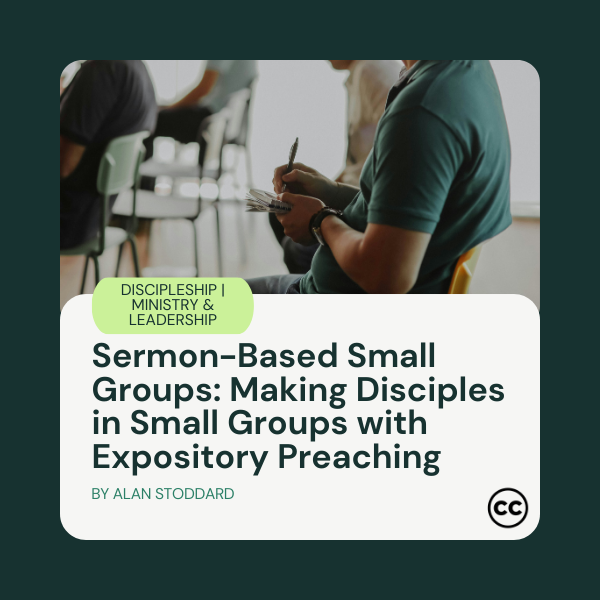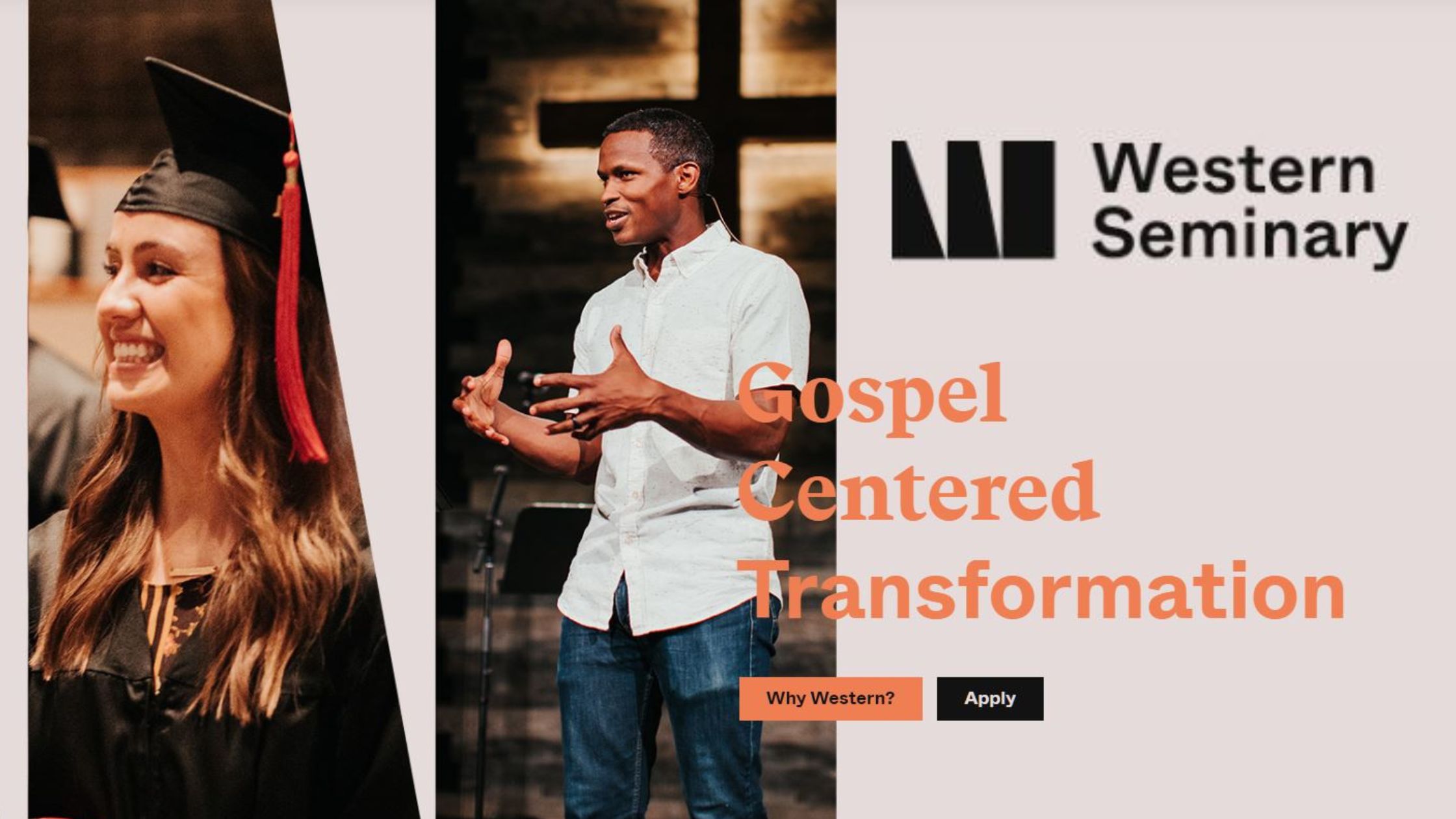
What is my story with sermon-based small groups?
On July 27, 2017, our world lost a legend. It was on that day Haddon Robinson stepped into eternity. I was blessed to study with Dr. Robinson at Gordon-Conwell in the Doctor of Ministry program. I just wanted to study with Haddon Robinson. I did not really care about another degree. As I finished the last seminar in 2008, I was demoralized. I was the only student in my cohort to not get the dissertation proposal approved. I got on the plane ready to fly back home ready to quit, but that did not sit well with me. I was caught in the tension of quitting and moving on with ministry and the tension of being a quitter.
When we got up to 30k feet, I was reading a book called Simple Church. The book was about simplifying ministry by doing less to accomplish more. As I was reading, I experienced a revival. I read about how a pastor was using sermon-based groups to reinforce expository preaching. It was just a sliver of the content in the book, but it spoke to me as if God allowed me to discover gold while on high. I wondered to myself, “Could I write something on this topic?” Little did I know how 15 years later this topic and strategy would be producing fruit. I got up the next day, shook off the cobwebs of travel, and Googled “sermon-based small groups.” The rest is history. My ministry strategy changed. I wrote a dissertation on “Reinforcing Expository Preaching with Sermon-Based Small Groups.” I graduated. My dissertation has produced much fruit. It is really good when you can live your work.
Why should you use sermon-based small groups?
If I told you that only 1 in 10 newer younger believers get discipled after crossing the line of faith, what would your response be? Take the poll in any room of Christians, and it will prove true. One of the laser beam focuses we need to have these days is disciple-making. One of the ways new believers need to be discipled is to get them into healthy small groups. The problem with many group strategies is the groups within the strategies are not healthy groups. It is the quickest way to disciple people. Why should you use sermon-based small groups? There are a few reasons, but the main one is to make disciples.1 In today’s church world, there are many definitions of disciple-making. Yet if we at least use the imagery and meaning found in Jesus and the twelve, we can see small groups are where He discipled. He took 12-20 people for 3 years and poured Himself into them.2 If that is true, and in light of pandemic realities that could surface again, should we not focus on equipping people to know how to be disciples in small groups? Yet we will keep that focus tethered to the local church through preaching. Why should you consider sermon-based small groups? They are the best way for pastors to make disciples from the pulpit to the pew. Calvary Chapels and our commitment to systematic, verse-by-verse preaching, are tailor-made for sermon-based small groups.
Are sermon-based small groups biblical?
As I started writing about sermon-based small groups, I fought the desire to rush and finish a degree and to go slow and learn at the doctoral level. I sent in my second chapter to Haddon Robinson hoping to start on the third chapter. The problem is I got to my mailbox only to find my second chapter bleeding red. Most of the red was easy to fix, but one glaring question blared out from Haddon: “Is what you are arguing about sermon-based small groups found in the Bible?” That was embarrassingly frustrating. I was embarrassed because I did not think to look at it like that. I was frustrated because my quick approach to getting done just came to an abrupt stop.
I quickly opened my Bible. The first passage I knew off the top of my head to footnote this was the parable of the sower. Jesus told the parable to the crowd, but took the disciples aside to explain the parable just to them.3 Jesus repeated this often for three years. I skimmed Acts with a fine-tooth comb. There were more4 than a few examples of public teaching in the synagogue that ended up in a living room. The more famous example has to be when Paul taught the word and preached the gospel publicly in the synagogue of Berea only to have some of the Bereans afterward, “eagerly … examining the scriptures carefully everyday to see if these things were so.”5 I sent the chapter back to Robinson. He was pleased with the research I had done. So you may ask, “Are sermon-based small groups biblical?” They are biblical and are evidence of having a Great Commission focus. These groups like in the early church do not change the topic. These groups drill straight down on the topic preached on a Sunday.
Sermon-based small groups are a church-unifying strategy to make disciples around the preaching ministry of the church. Calvary Chapels prioritize the scriptures above all. We already know the fruit of that commitment.
Sermon-based small groups create a place for life change:
Let there be no doubt that God alone brings transformation. Yet how does He do it? He transforms internally by the power of the gospel applied to the heart. Life change happens from the inside out. Yet we have realized the external expression of faith is crucial to spiritual growth. The best expression of spiritual growth is found in a small group of disciples growing together. There is a challenge to discipleship.
The challenge to discipleship that sermon-based small groups answer is found in the Edgar Dale Cone of Learning. Most people do not know that name but they do recognize the often quoted list. People remember …
10% of what they read
20% of what they hear
30% of what they see
50% of what they see and hear (passive learning ends here and active learning begins)
70% of what they discuss
80% of what they do
90% of what they teach
Notice a couple of things. First, for us teachers and preachers, it can be a little demoralizing to think of the small percentages of people not remembering our messages. Also, notice in the list above where active learning does not start until people discuss ideas. Do we want passive learning or active learning? I think we would all say we know we need both. Yet we often lean heavily on the passive content delivery aspects of preaching while not paying much attention at all to the active learning aspects.
If active learning does not start until discussion happens, then we need to get people talking. About what? the Bible. What is the best vehicle for that discussion? The pastor’s text from Sunday wrapped around some well written questions in a group led by a disciple-making leader.
What churches are using sermon-based small groups effectively?
In 2008, many West Coast churches used sermon-based small groups. The church that uses sermon-based small groups effectively and equips other churches to use them is North Coast Church led by Chris Brown and Larry Osborne. North Coast boasts a 90% Sunday morning attendance in small groups when measured each October. Calvary Albuquerque with Skip Heitzig has been known to use sermon-based small groups. Francis Chan used them when he was at Cornerstone Church. Many church plants in the last 10 years utilize sermon-based small groups. Why? These groups are easier to manage because the pastor is the first teacher. The pastor is the main driver of discipleship in this strategy. These groups provide a synergy around the Sunday morning worship experience that is efficient and effective.
I too have implemented sermon-based small groups. At Calvary Ruidoso, we had 12 attending Wednesday night Bible study. We made a move to sermon-based groups on Wednesday nights instead of our traditional Bible study. We launched 4 small groups and had 80 people attending those groups. We went from 12 to 80. We equipped leaders, wrote questions, and found cross-reference passages to reinforce the passage used in the message. We went from one group to four, then four to eight in a four-year period. It was a great win for us.
Is small-group disciple making not something we know we should offer to the people we shepherd? In light of recent pandemic realities, do sermon-based small groups need to be an offering within your Great Commission strategy?
A strategic plan for implementing sermon-based small groups:
1. Make the decision to drive disciple making through sermon-based small groups in the church you serve. Are you satisfied with your small-groups strategy?
2. Set a date to start. Make the decision to implement a semester strategy. Which semester will you start with: fall, winter, spring? (Summer is not an option.)
3. Plan the sermon series. Make the first series fit closely to the first-semester calendar. Matching exactly is not required but is wise for the first launch. Wrap your sermon-based small groups launch around a series that will engage and disciple people.
4. Select SBSG leaders. Make prayerful, personal selections.
● character
● chemistry
● competence
● calling
5. Disciple leaders. Pastors should meet with small-group leaders monthly for fellowship, encouragement, and equipping. This will be a game changer. Send out a weekly seven-minute video equipping and encouraging small group leaders.
6. Select a writing team.
● The pastor can write the questions. He has a few already from his preparation.
● If a church has a staff, they could be required to write questions and cross references.
● Churches probably have gifted writers who would be willing to be on a rotating team that writes questions.
7. Set deadlines.
● The more you plan ahead the easier the weekly plan becomes. This makes preaching and disciple making effective and efficient in the disciple-making process.
● When will the questions be written? It is best to work weeks ahead on a majority of the sermon-based small-group notes. That allows for polishing, loading, and distributing the week of their use.
● When will they be turned into a pdf? These should be loaded for public use on the web Sunday night or Monday morning after the sermon is preached. Small-group leaders should get them two weeks out.
● Who will do these things? A church administrative assistant could and should do this if a church has that margin.
Make structural adjustments. Think through and decide the strategy that fits your current structure. If you have a Sunday School model, how do you use sermon-based small groups? We live in a hybrid culture. You can and should use both. There is much more to that strategy that can be addressed in a single article. I can say this: If a church with an on-campus structure is not using off-campus groups at this point in our culture, that church is missing an opportunity.
What will you do?
I like to say to pastors, “You worked 10-20 hours on your Sunday morning message. Why would you change topics in small groups? Why not keep the momentum of Sunday going in a small group on Tuesday? Or Wednesday?”
If I can serve you in any way, reach out. I would love to come alongside you to make sermon-based small groups happen in the church you serve.
www.twitter.com/alan_stoddard
vision419@gmail.com
References
1 Matt. 28:19, Mark 16:15, Luke 24:45, John 20:21, Acts 1:8. I see two strategic things churches need to do. First, disciple new believers one-on-one. Second, make disciples in small groups.
2 See Robert Coleman, Master Plan of Evangelism, for a brief, thorough breakdown on how Jesus made disciples.
3 Matt. 13:1-23, Mark 4:1-20, Luke 8:4-15.
4 For a full list of scriptures, see our book: Priest, Kenneth and Stoddard, Alan. Groups That Revitalize: Bringing New Life To Your Church Through Sermon-Based Small Groups. (Littleton, Colorado: Acoma Press, 2019).
5 Acts 17:10-11.







